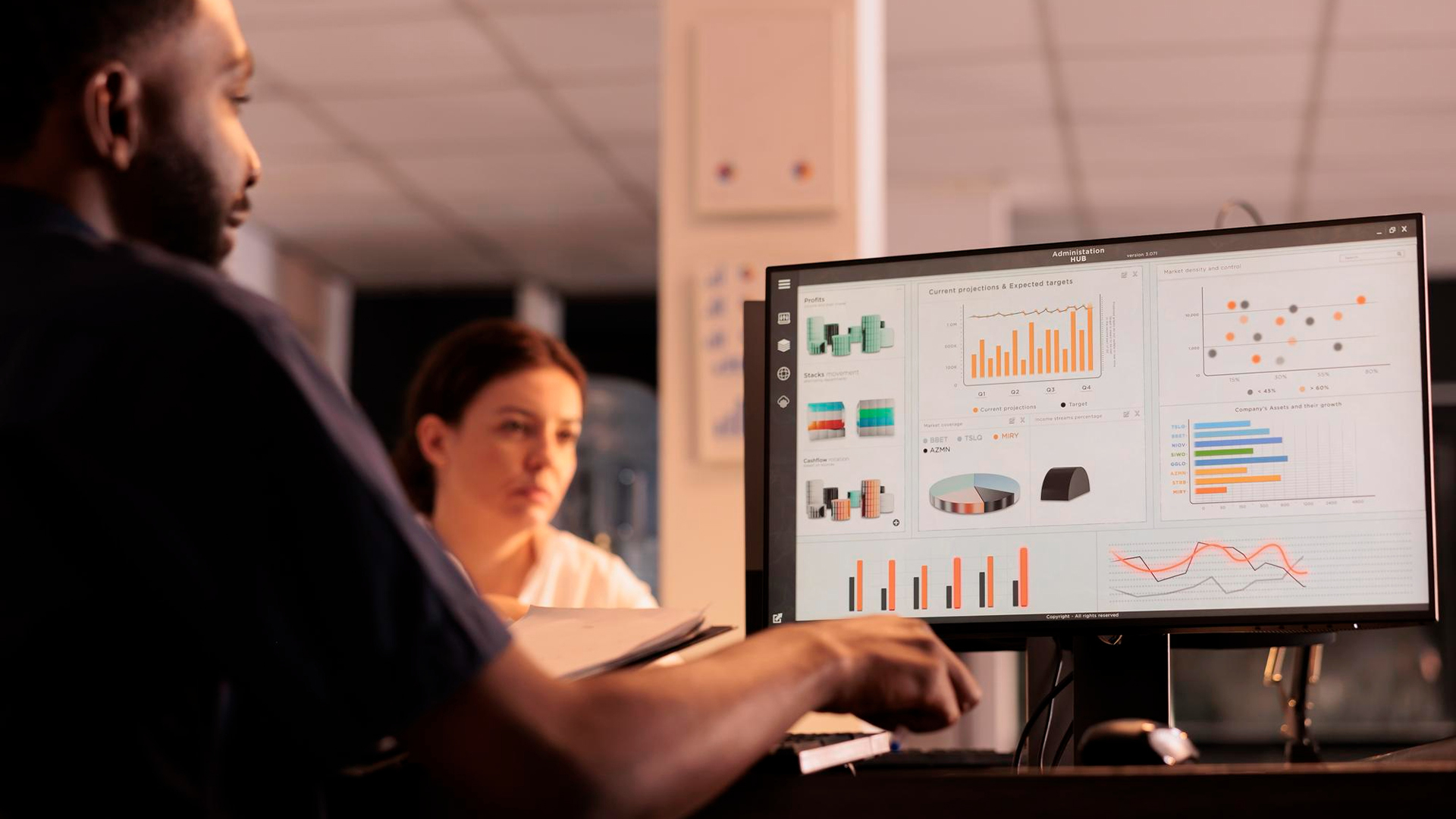By John Hilgendorf
Whether you’re an executive with limited energy or an hourly employee trying to minimize work, the bottleneck on productivity is not time or money, but mental effort. And in a digital age where all data can be stored electronically, the most valuable propositions of software—especially those in manufacturing applications—are to reduce friction between humans and software and between software packages. For example, any data written on a clipboard can later be transferred to a program, but it will rarely happen unless failure will stop production. Myriad machine data can be logged, but if Ops Managers have to go down to the floor and log in to a machine, they’ll never see it. Even needing to open another interface and enter a password will reduce the frequency of use of that system. In essence, any elimination of human processes between machine and machine or between machine and server will have the potential to improve the bottom line.
Functions to Expect
Minimizing Clipboards
Aside from the risks of unnecessary loose items on the floor, any data put on a clipboard is going to need another manual step to transfer it to a spreadsheet, so you should eliminate it when possible. An example from the X-ray world is “validations.” Most SOPs—and large buyer audits—require operators to pass known contaminants through inspection machines to ensure they’re being rejected. Traditional procedure has been to log these validations on a clipboard so they can be presented at the end of the quarter or fiscal year. But logging in real time is disruptive so operators postpone filling out the sheet until the end of the shift, then the week, then the quarter. Before you know it, the validations stop happening and the spreadsheets end up getting spoofed right before each audit. By automating the logging of these events, you can not only reduce administrative burden, but reduce the likelihood of recalls and failed audits.
Aggregating Machine Data
The second priority is finding a package that can turn machine data—which managers combine to gather useful insights—into system data. By seeing it all in context, managers can more easily diagnose problems and take corrective action. X-ray machines telling you they’re rejecting an abnormal amount of a certain contaminant can tell you which machine is failing. And if you have multiple plants with software that ties them together, you’ll know which problems are specific to one plant and which are global issues.
Remote Control/Closing the PC-PLC Loop
Aside from being able to trigger equipment actions based on external events, it’s almost always helpful to control equipment remotely from the same platform that’s telling you what’s happening. By lessening the need for management to take a trip to the Programmable Logic Controller (PLC), you increase the frequency of smaller corrections. This also allows urgent actions to be taken more quickly. Older software packages are specialized in either PC or PLC commands, but now you can expect a solution that does both. This also allows corporate to see real-time manufacturing data, which can solve many issues within their plants.
Dynamic Commands
Speaking of shortening reaction time, there are times when all the data in the world is pointless if it requires human action. For example, if a machine dispenses incorrectly or a failure introduces foreign material into the batch, human reaction isn’t always fast enough to save the lot. In these cases, having other equipment—or the whole line—stop automatically based on predefined triggers can save time and tears.
Closing The ERP Loop
Some of the highest-value dynamic commands—and the easiest to implement—are those related to your Enterprise Resource Planning (ERP) software. If a bulk bag runs out partway through a batch, it may be too late to save it. Software that alerts you when an ingredient is running low or shuts down the line if you fail to fill it on time can save a lot of product. The analytics and control package should also be able to prevent the addition of incorrect ingredients, which is one of the biggest causes of product loss. Since the ingredients were ordered through an ERP, they should already be coded with identifiers recognized in the network. By requiring personnel to scan supersacks or dumpers before they can be introduced to the line, the system can refuse or accept it automatically. Again, this data will be viewable by corporate, if needed.
Automated Reports
Having to set parameters and generate reports each time data is viewed—even having to log into one more interface—will invariably decrease how often that data is viewed. No matter how little time it takes, a process will be completed less if it’s inconvenient. A good way to force managers to see their data is to identify pain-points during testing and set reports early. By having reports automatically generated and sent to management at the end of every shift, day, or week, they will get more from their data. All the data in the world is worthless if no one’s crunching it.
Alerts
Reports are great for most operations, but for emergencies you need alerts. If a machine is failing or other mishaps are afoot, you want to know immediately. Product contamination is a prime example; you may not want to stop the line in these events, but you do want staff alerted immediately. For example, if someone drops something into a batch, they’re unlikely to report it for fear of punishment. Traditionally it has taken time for product to travel to QA, which takes more time to determine that something abnormal happened, so by the time they realize an incident occurred they have to pull a huge timeframe of product to be safe. An alert system will let you know something is off immediately. Then you can more precisely identify the jeopardized product even if you can’t act right away. Your software should be able to “woof” management and personnel via text, email and machine lights.
Buyer Audits and Product Traceability
Whether it’s X-ray machine validations, ensuring temperature was held sufficiently or being able to trace batches two forward and two back, manual logging and presentation is a logistical burden and your software should do this automatically. Simply by using traceability software, for example, Costco allows producers to sidestep their manual mock-recalls.
Features to Weigh
Customizability
Everyone’s system is different, so nearly any solution sophisticated enough to have a website will be customizable. The question is, “How customizable?” Is customization an assumed factor or is the software with the surprise of customization costing hundreds of thousands of dollars? Can the software be integrated into machines and networks remotely, or do they require on-site visits to justify higher prices?
In reality, virtually any provider can solve any problem you have depending on how hungry they are and how adjacent their existing solution is. The problem is, because of the way keywords and SEO function, products are marketed by benefit rather than function. (A solution may be unique because it is a good SQL data aggregator, but that won’t mean much to people looking for it, so it will be marketed as a dairy-systems analytics option because that’s the easiest application and also what people are searching for. You may need a dairy systems analytics package, but something marketed to another industry may be your ideal package). Instead of looking for software that mentions your product, start with a clear definition of your pain points and cast a large net. Send your hopes to everyone adjacent to your needs and see what their confidence and price is—and don’t forget to scan their benefits for functionality you may not realize you need.
Service
After-sales service is where many providers like to hide fees and cut costs because everyone needs it and few truly investigate it before purchase. So look at support options. Is their phone number easy to find? Is there an emergency line your operators can call and get a competent technician? Can you talk to someone who can make decisions? What are the service rates/packages? It may sound like a lot of hassle, but an ounce of prevention really is worth a pound of cure.
Price-Power Continuum
Price and power of quality software tend to go together because more powerful is more complex and will inherently have a longer learning curve. If you’re a car manufacturer, for example, this will be OK because you can have staff dedicated exclusively to knowing the software. But assuming you’re in the bottom 99% of food producers and want your Production and QA Managers to be able to use their software effectively, it would behoove you to choose a package that is not marketed on its adoption by the “big players.” Software will not “take your business to the next level,” but it will reduce friction and help your bottom line.
Local/Cloud Functionality
Whether you want the security of a local system or the accessibility and quick support of the cloud, this is something worth considering in the early stages because not everyone offers both.
We are finally at the point where platforms are coming together. Your production line should be viewable and connected to management’s computers, you should have automatic triggers set up for known risks and your system should be synced with your ERP to prevent the easily-avoidable bad batches. Reporting should be automated and managers should be getting the desired alerts whether at dinner, on the golf course or on the floor.
“Looking forward, we expect operators, managers and software developers to get better at using this connectedness,” said John Cassa, Co-Owner of ABM Equipment. “And eventually we should see AI making simple, split-second decisions. But with how royally things can be messed up in larger systems, we don’t expect it to play a major role for quite some time.”






